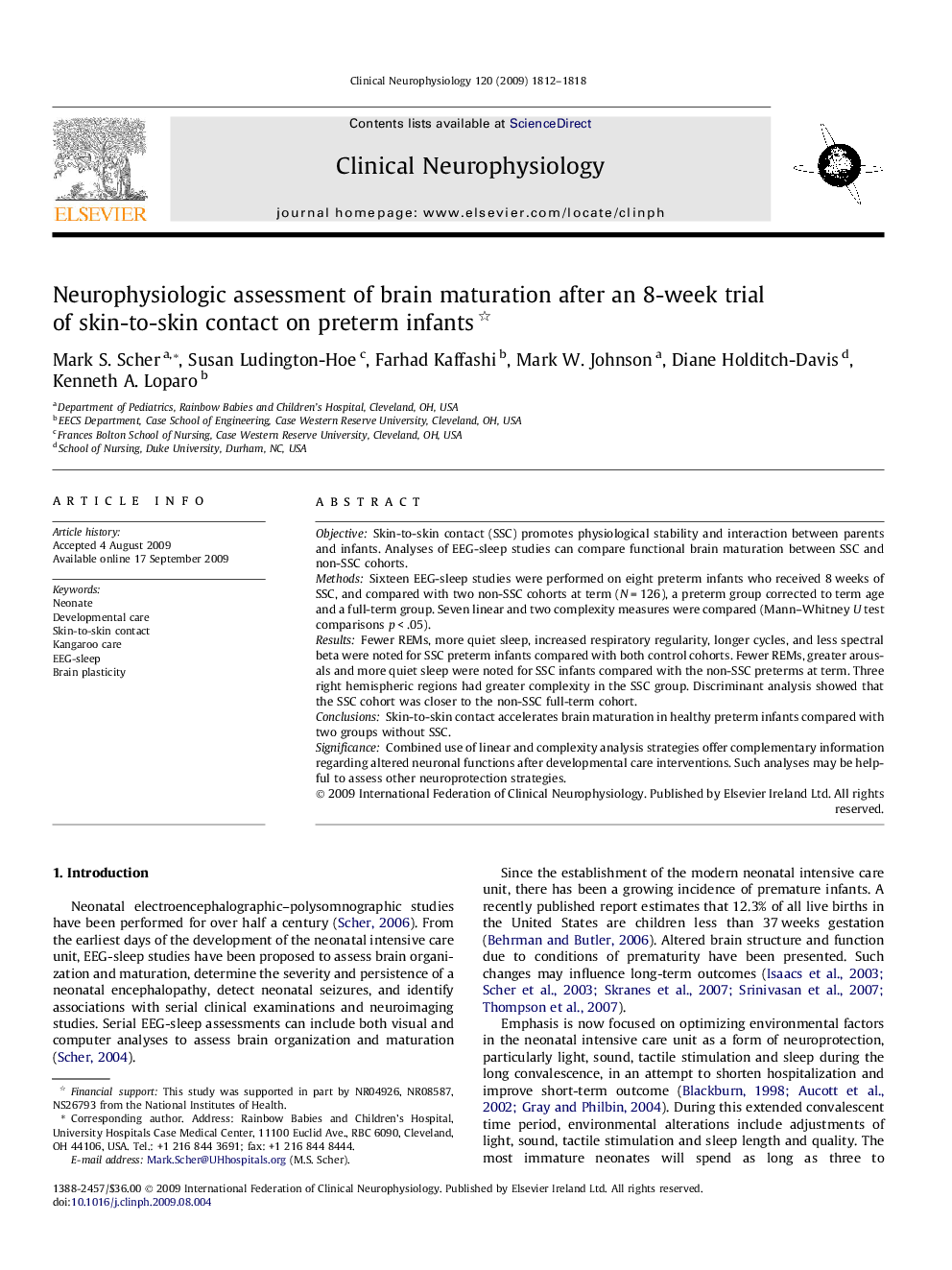| Article ID | Journal | Published Year | Pages | File Type |
|---|---|---|---|---|
| 3046148 | Clinical Neurophysiology | 2009 | 7 Pages |
ObjectiveSkin-to-skin contact (SSC) promotes physiological stability and interaction between parents and infants. Analyses of EEG-sleep studies can compare functional brain maturation between SSC and non-SSC cohorts.MethodsSixteen EEG-sleep studies were performed on eight preterm infants who received 8 weeks of SSC, and compared with two non-SSC cohorts at term (N = 126), a preterm group corrected to term age and a full-term group. Seven linear and two complexity measures were compared (Mann–Whitney U test comparisons p < .05).ResultsFewer REMs, more quiet sleep, increased respiratory regularity, longer cycles, and less spectral beta were noted for SSC preterm infants compared with both control cohorts. Fewer REMs, greater arousals and more quiet sleep were noted for SSC infants compared with the non-SSC preterms at term. Three right hemispheric regions had greater complexity in the SSC group. Discriminant analysis showed that the SSC cohort was closer to the non-SSC full-term cohort.ConclusionsSkin-to-skin contact accelerates brain maturation in healthy preterm infants compared with two groups without SSC.SignificanceCombined use of linear and complexity analysis strategies offer complementary information regarding altered neuronal functions after developmental care interventions. Such analyses may be helpful to assess other neuroprotection strategies.
